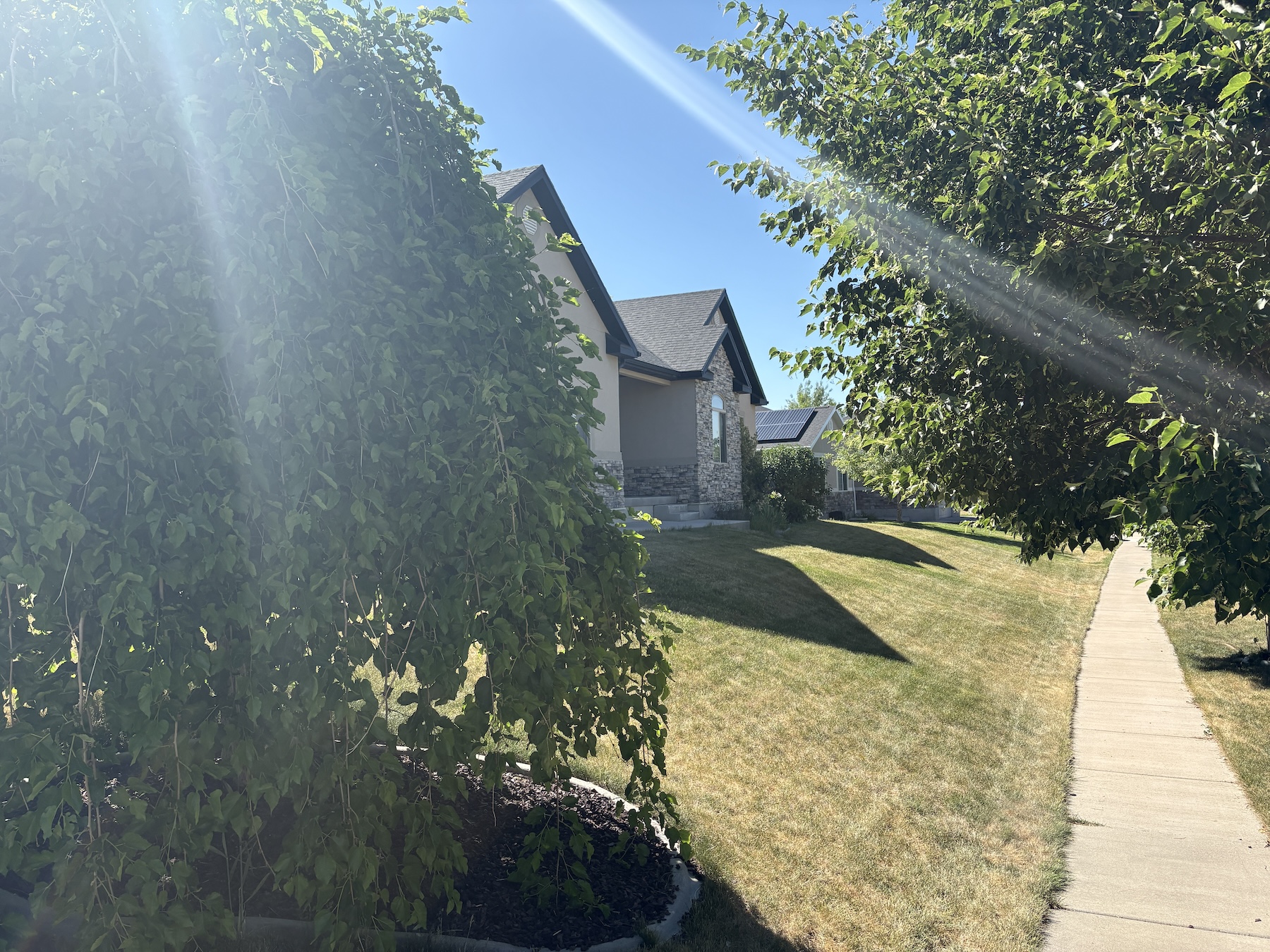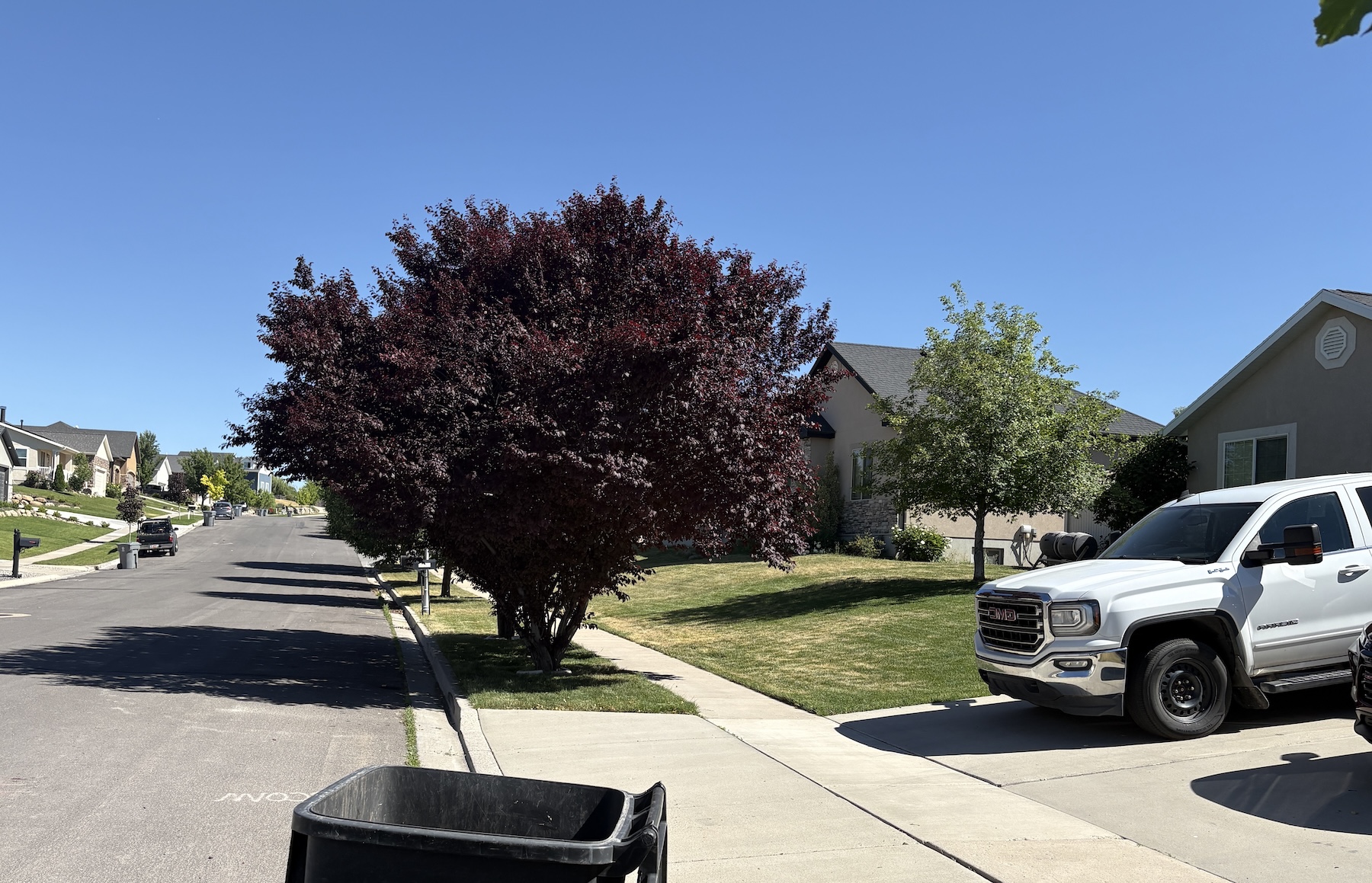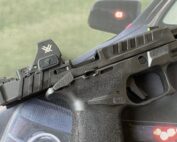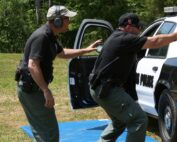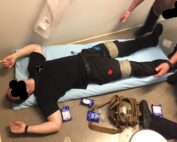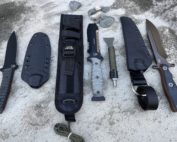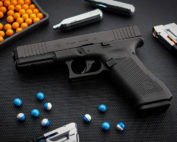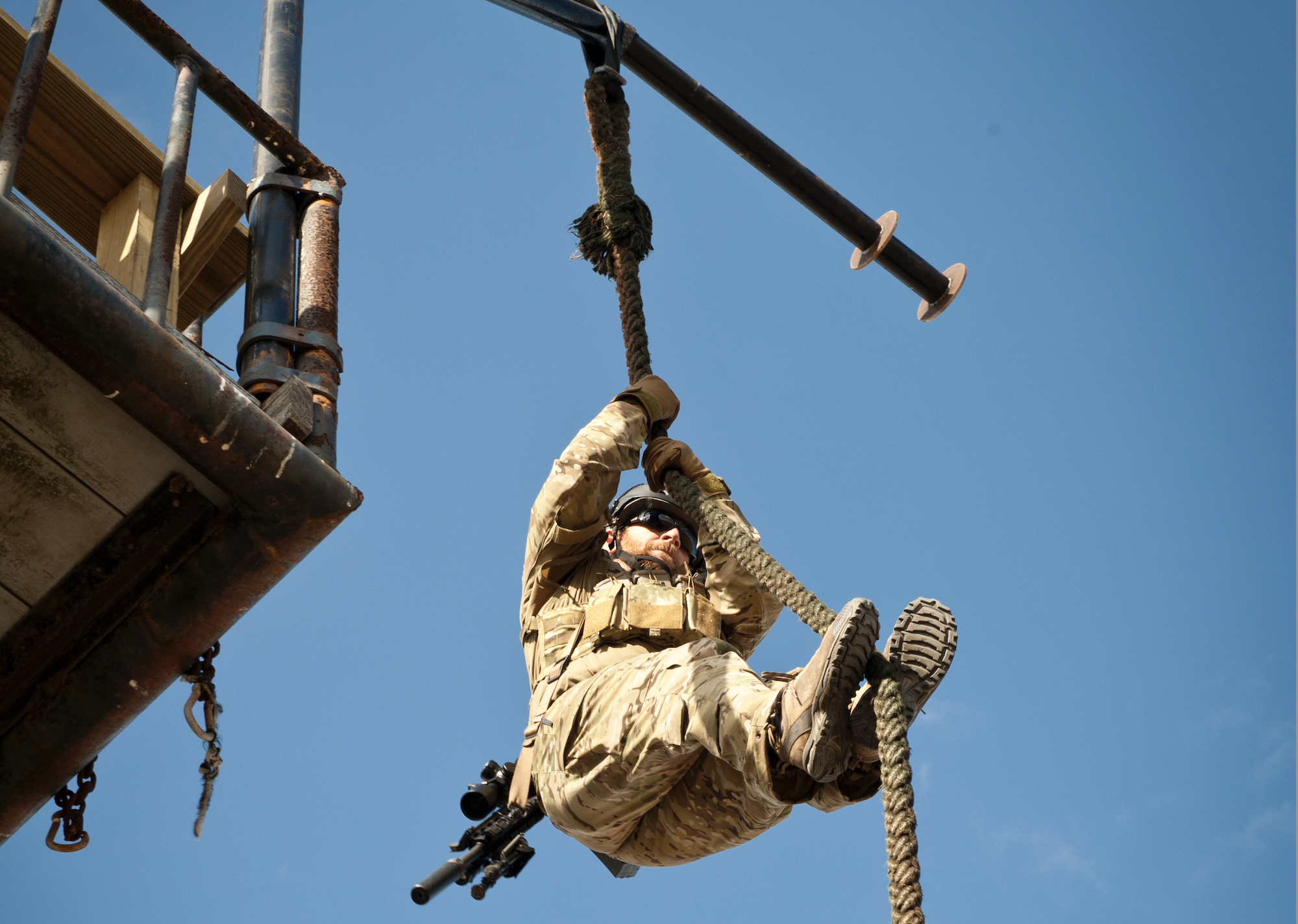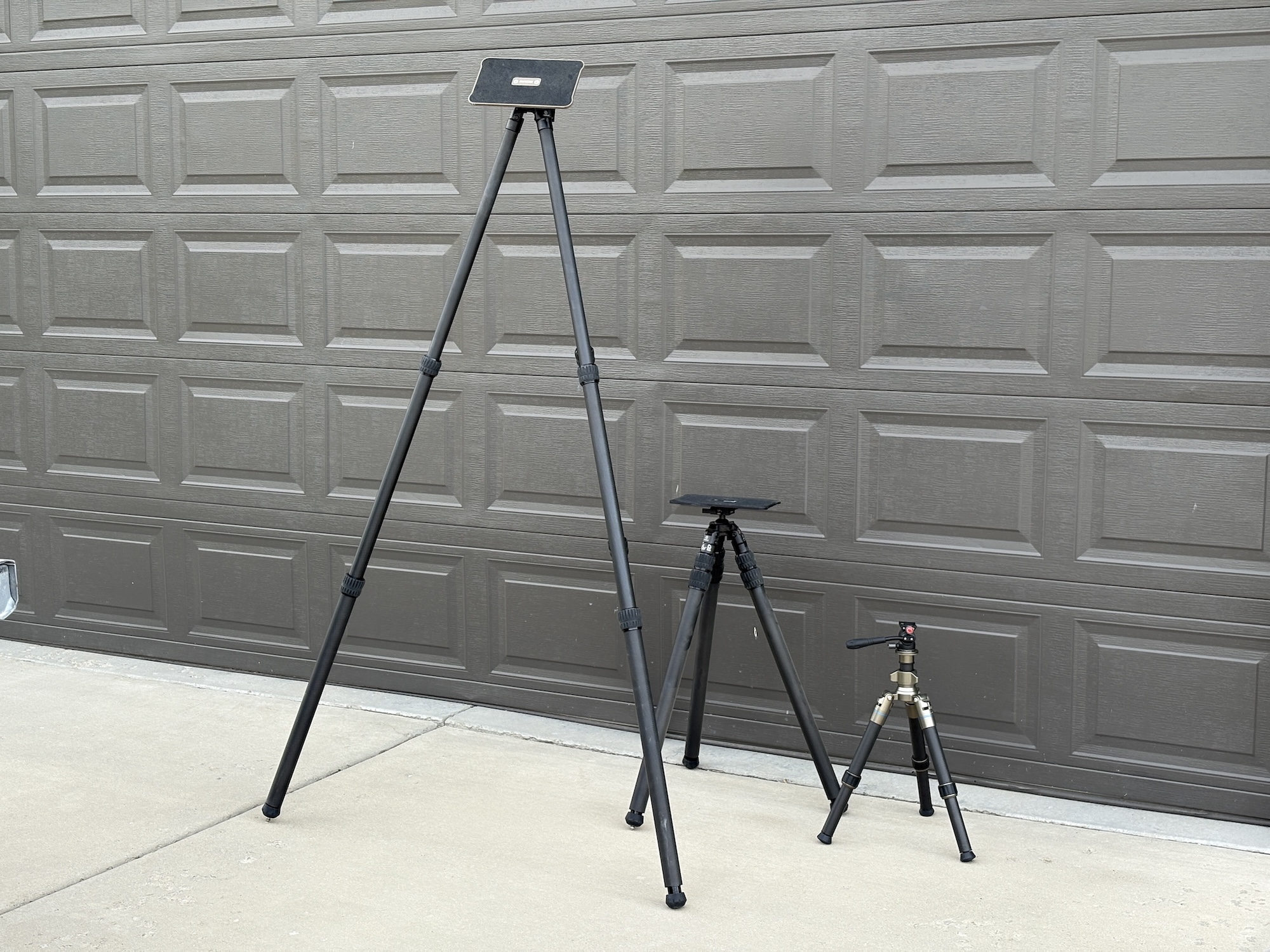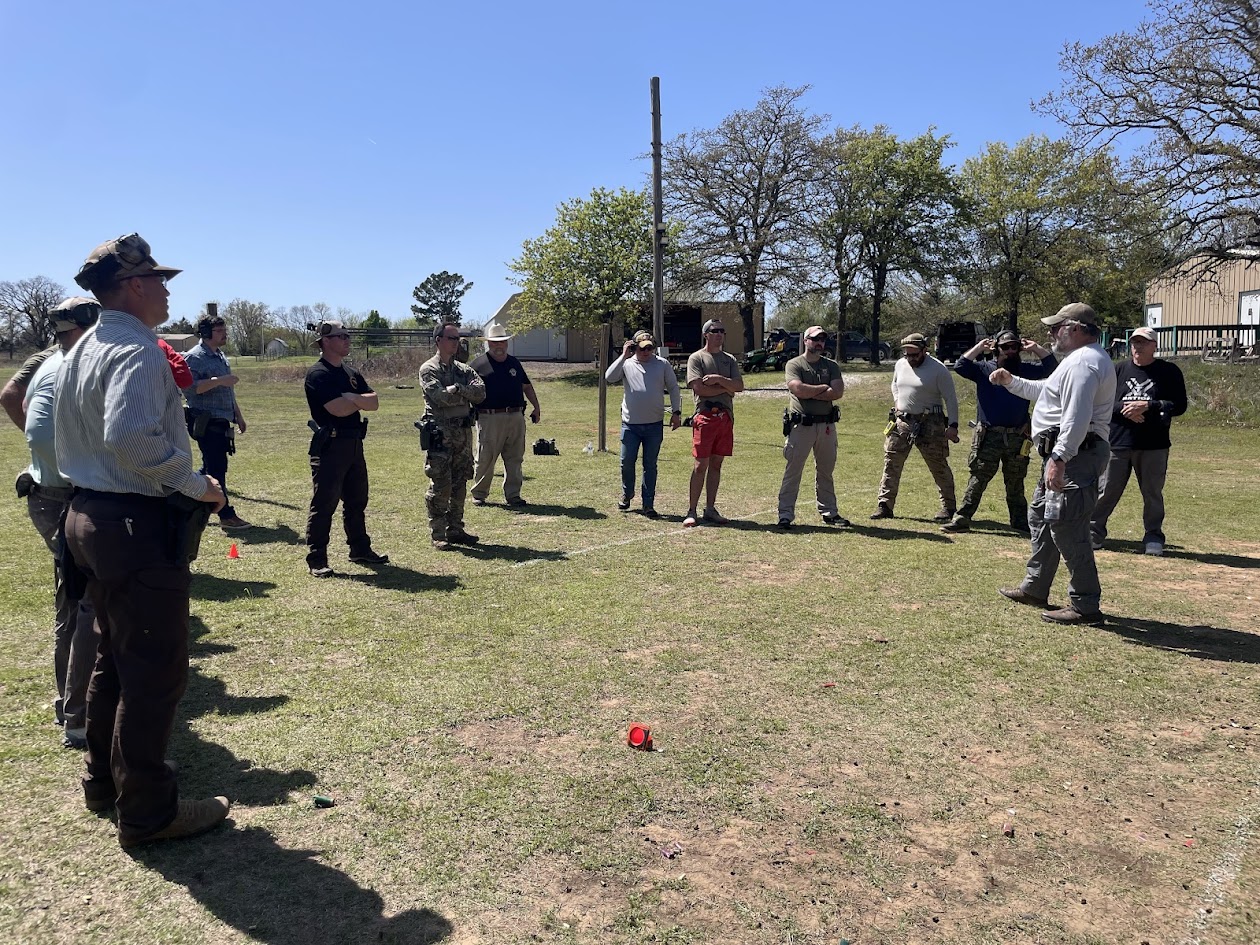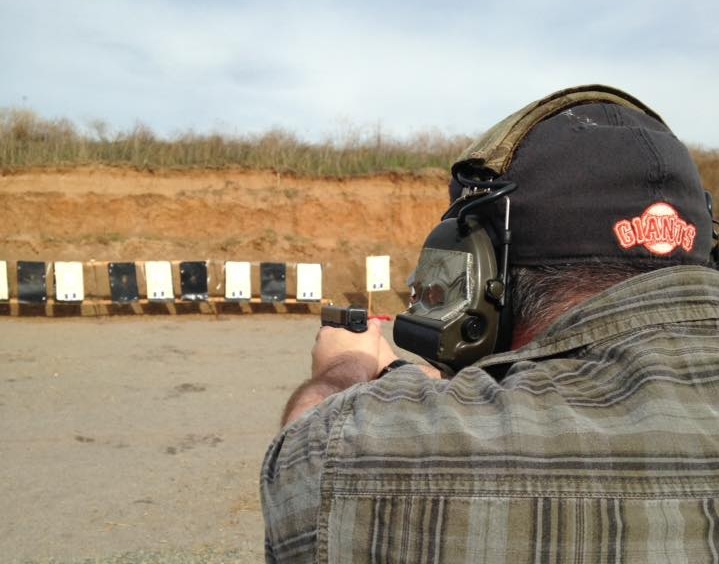
feature_dis14947491_1472974832717865_3007877188160835951_n copy
25-yard pistol work using iron sights on a Glock-19.
As mentioned in our Police Memorial Week article, ambushes are a common way of attacking officers. A number of these occur when officers have just arrived on the scene. These scenes involve calls for service that may not trigger a sense of heightened alert or the need for additional resources. The dispatch information might even lull officers into canceling their cover (or second) units.
In Close
I’m going to use “we” a bunch because I am talking about the profession, even though I have been completely out of uniform for just over two years now.
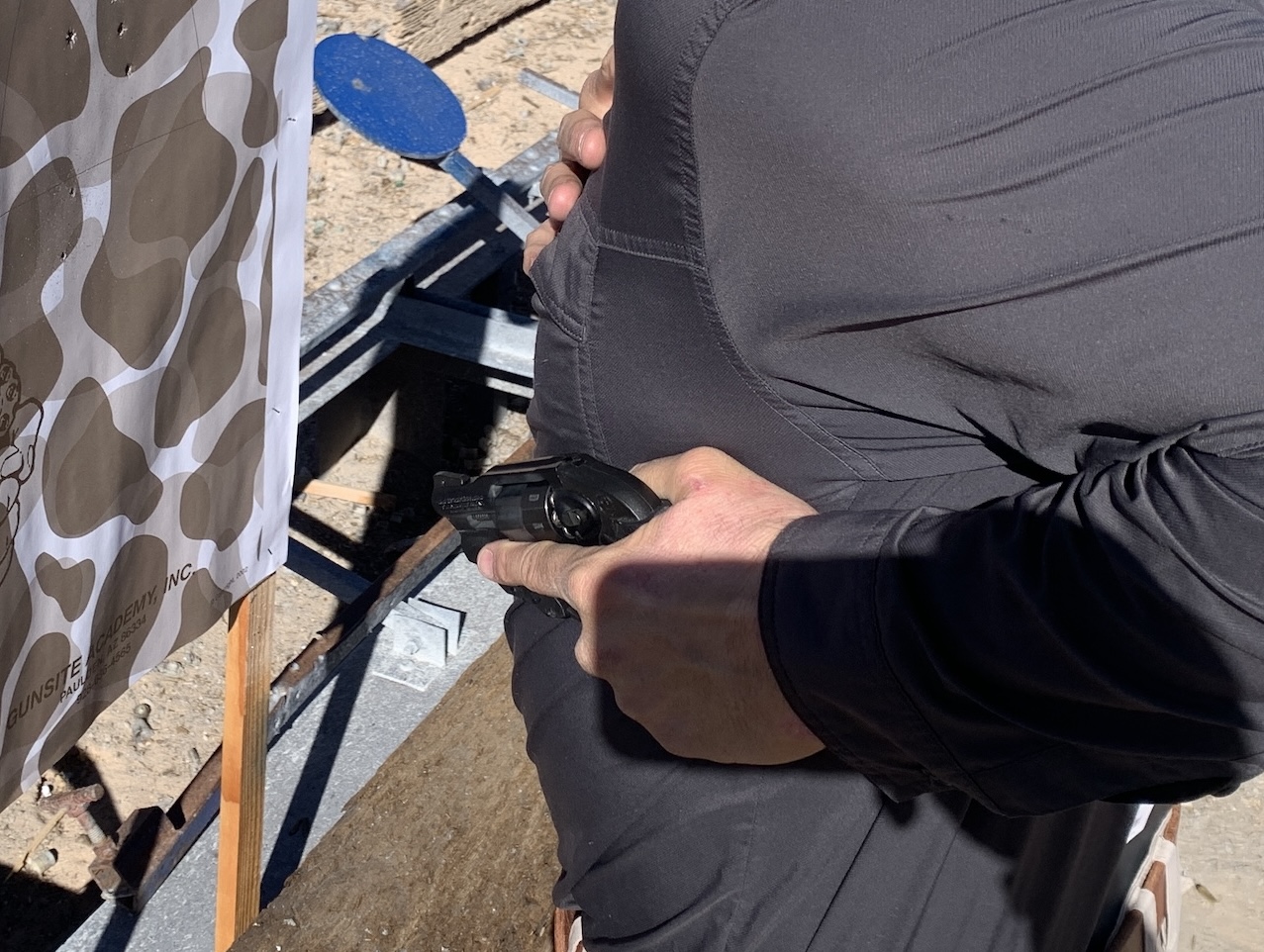
Shooting up close requires a different skill set from what you need at distance, from a Cecil Burch block on retention position shooting.
Historically, “we” are attacked and get into shootings at closer distances because of how we interact with the criminal population. Our encounters involve the length of a car because we are making vehicle stops or encountering a suspicious vehicle. Corner to corner in most bedrooms is about five yards, so we are there when searching inside a home. Finally, it is very difficult to pat search or handcuff someone without being within arm’s reach.
However, the ambush events I am thinking about are happening at longer distances. Twenty-five yards and beyond. How are your training, your practice, and your patterns addressing that?
Mental State
An ambush, regardless of where it occurs on the planet or who initiates it, is a premeditated killing. And if you are on the receiving end, someone is very serious about trying to kill you.
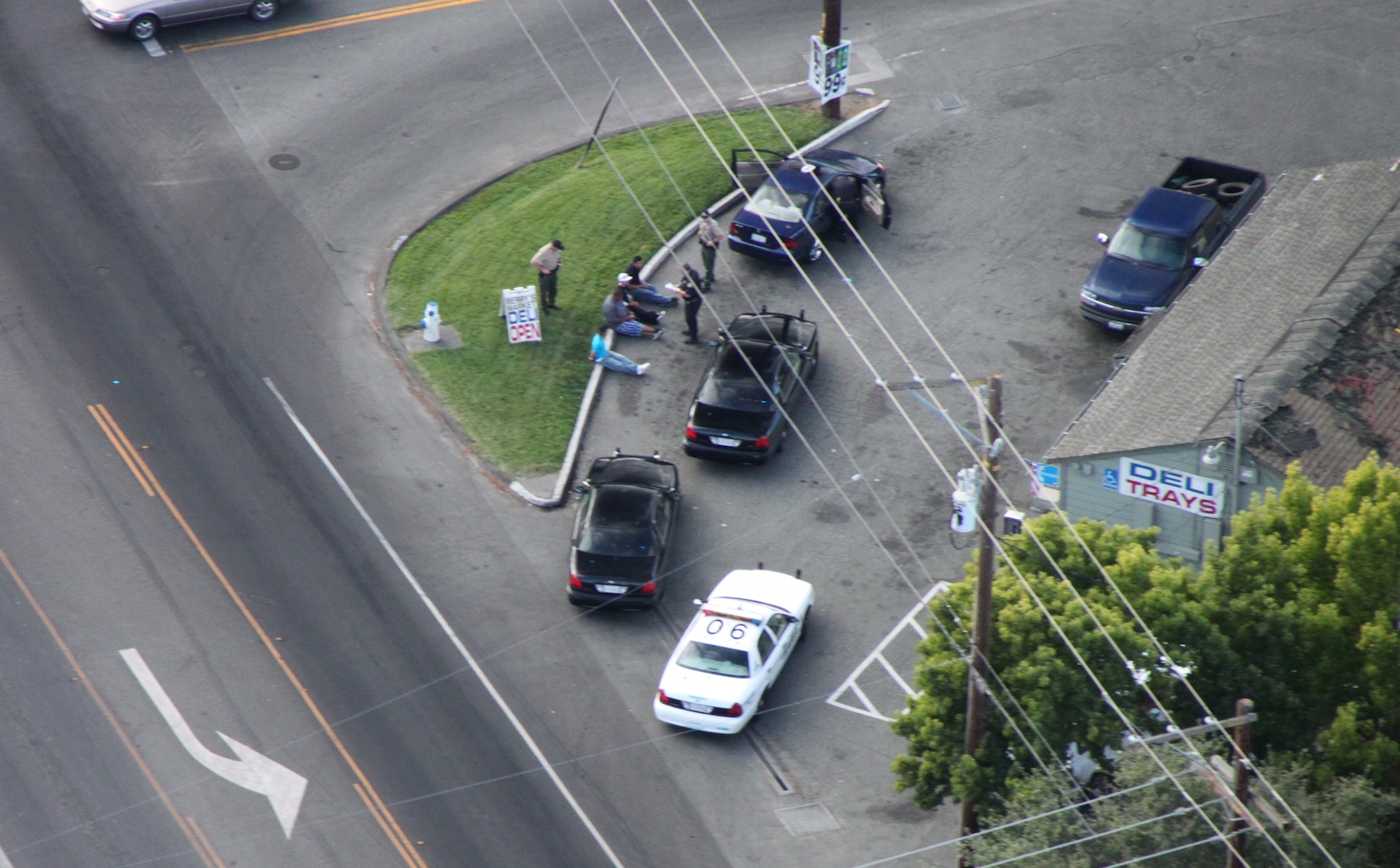
What is the distance from the rearmost patrol car to the suspect vehicle next to the pole? Or to the back of the pick-up from any of the sheriff’s cars? 20 yards? More?
To paraphrase the late Pat Rogers, you must make the decision now to flip your mental switch and turn on your “mean gene.” Pat’s phrase. When you are in the kill zone – a phrase used by both the military and California’s Commission on Peace Officer Standards and Training – help might be coming. Your survival depends on your ability to fight through the immediate problem.
You will need hard-wired physical skills for that mental state to matter.
Equipment Considerations
We carry handguns because they can be with us at all times. Aside from presence, handguns excel at giving us the ability to respond to an unexpected violent assault.
Therefore, we need the ability to shoot the handgun up to its full capability.
Yes, a long gun would be the best choice for addressing this problem. However, we cannot respond to day-in and day-out calls for service with a patrol rifle slung across our chest.
I was fortunate in that the academy I attended and the organization I worked for regularly shot at 25 yards. The more distance you have available, the more you can work on the necessary skills.
We talk at length about distances in your grocery store, across a mall parking lot, or a school hallway when addressing the benefits of patrol rifles. But what about those distances if you are only armed with your duty pistol?
How far is it to the front door on that call for service from where you parked? One or two houses away from the residence you are responding to? From the front door of my house to the street corner, it is just over twenty-five yards. From the front door to the closest I could park, while still having concealment, it was seventy-five yards. Going the other direction, it was 40 yards to park two houses away.
This is not a hypothetical discussion for me, as I was involved in a pistol shooting beyond twenty yards as a deputy.
The 25-Yard and Beyond Problem
While working on this multi-part article, I reached out to a longtime friend, Wayne Dobbs, a highly experienced police officer and seasoned trainer. He is also Aimpoint’s western US law enforcement representative. During that conversation, Wayne provided several thoughts.

The officer fired a single shot from next to the phone pole at the suspect who was at the orange near the left edge of the photo, 36 yards away. (Screen capture from Fox61 video)
One of which is the benefits of pistol-mounted optics at distance, once you have mastered the foundational skills. Dobbs mentioned two recent events. One involved a Houston, Texas-area officer making a 60-yard headshot using a pistol-mounted optic.
The second was the 2022 ambush and murder of two Connecticut officers responding to a 9-1-1 call. After shooting and killing two officers with an M-4 carbine, he shot the third officer in the leg. Making use of structures and vehicles for cover, the wounded officer moved to where he had a clear line of sight on the suspect. From there, about 36 yards away, the officer fired a single headshot from an optic-equipped 9mm Glock. That shot killed the offender, ending the attack. In talking with another Connecticut officer about the murders and shootings, he mentioned that the officer frequently trained on his own.
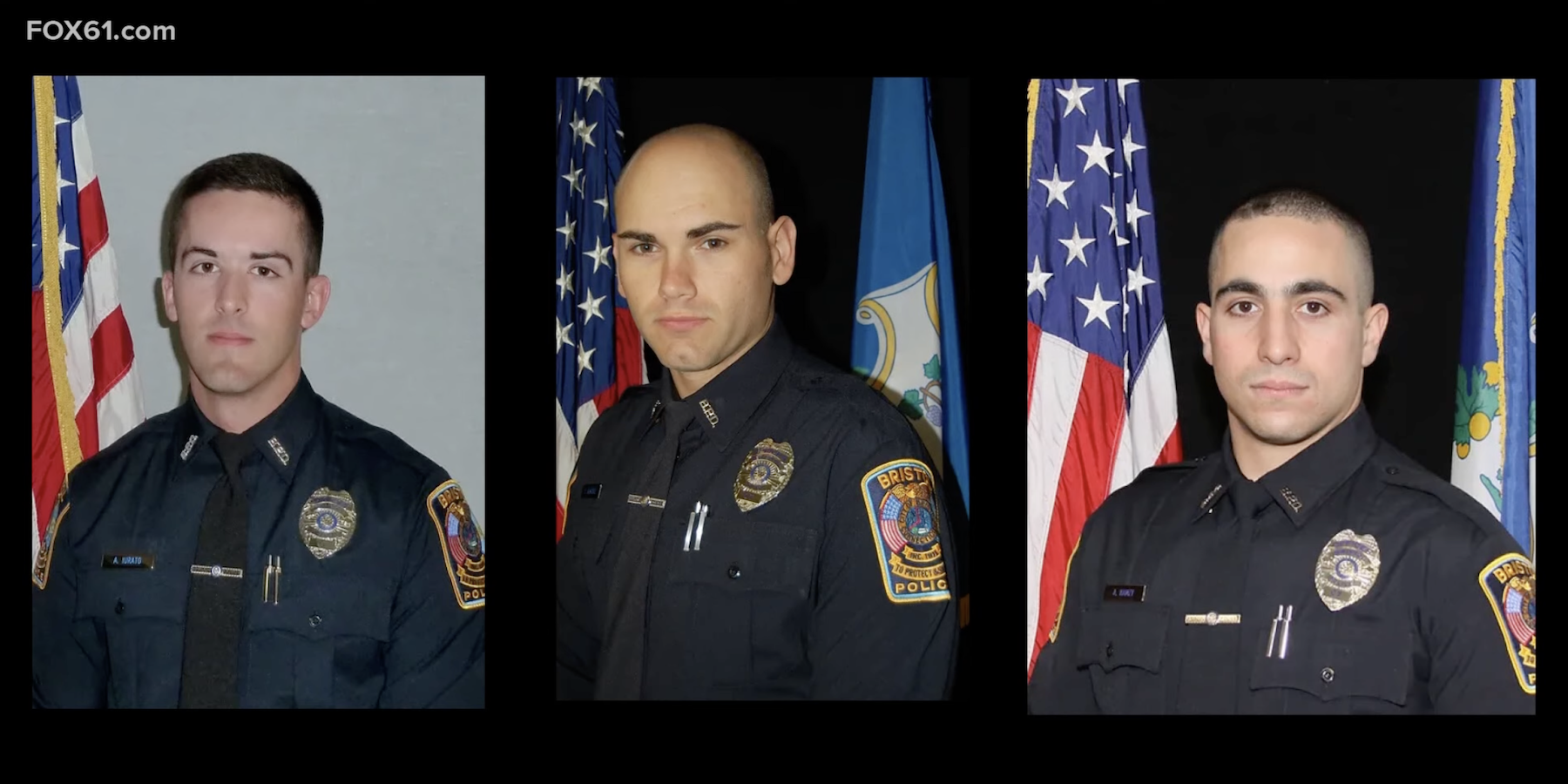
Bristol, CT Sgt. Dustin DeMonte and Off. Alex Hamzy were murdered in the ambush. Off. Alec Iurato was also wounded before he was able to fire a single shot, ending the attack. (Agency released photos posted by Fox61).
Next Up
In Part 2, we will delve into relevant dry practice, including range work and drills. With them, you can set yourself up for success when you must defeat an ambush at a distance using just your handgun.
Look for an upcoming article on a No Fail pistol class John Hearne recently attended.
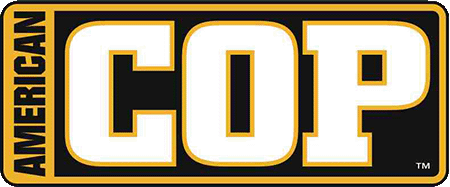

 (+4 rating, 4 votes)
(+4 rating, 4 votes)